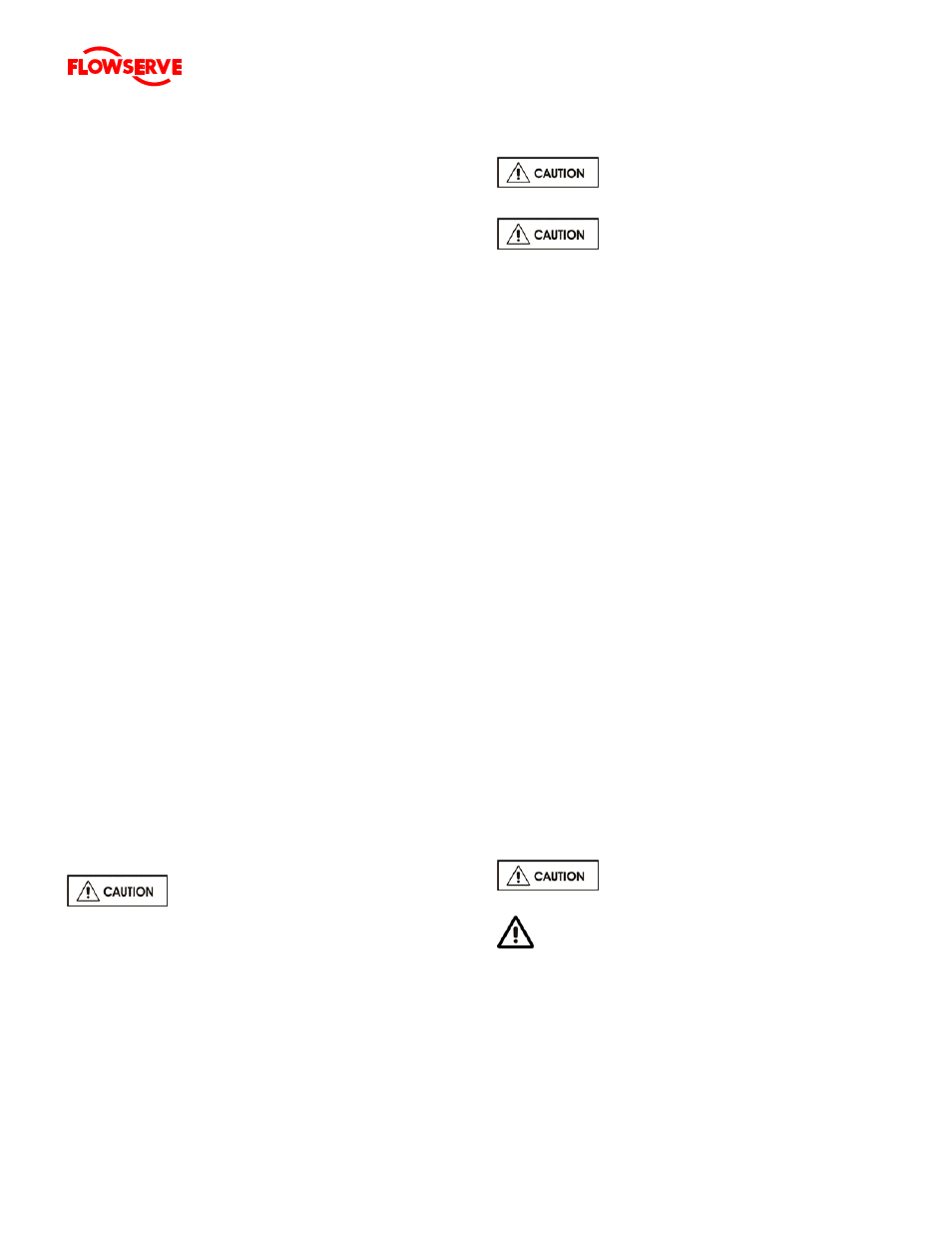Flowserve Twin Screw Rotary User Manual
Page 26

TWIN SCREW PUMPS. ORIGINAL USER INSTRUCTIONS. ENGLISH. 71569243 – 07/10
Page 23 of 53
®
4.6 Grouting
The purpose of grouting is to provide rigid support to the
pump and driver by increasing the structural rigidity of
the baseplate and making it an integral mass with the
foundation.
Clean the roughed foundation surface and build a
wooden form around the baseplate (see Fig. 1). For
initial grouting forms should be placed to isolate shims
and levelling nuts. The foundation surface should be
thoroughly saturated with water before grouting. A
typical mixture for grouting-in a pump base is composed
of one part pure Portland cement and two parts of clean
building sand with sufficient water to provide the proper
consistency. The grout should flow freely but not be so
wet as to cause the sand and cement to separate.
Thoroughly puddle the grout while pouring to eliminate
air pockets and low spots. Pour sufficient grouting to
ensure that the bottom surface of the baseplate is
completely submerged. Do not fill isolated areas around
the shims or levelling nuts. Once the grout has set
sufficiently, remove the wooden forms and finish off the
sides and top as desired. At the same time, roughen the
grout surface inside the baseplate. Cover with wet
burlap and allow the grout to cure for at least 40 hours.
After grouting has cured, shims and levelling nuts should
be removed or backed off. Tighten down baseplate to
the new grout to put bolts in tension and ensure rigidity of
structure. Install jam nuts and cut the bolts to the desired
length. Finish grouting isolated areas. Fill the baseplate
including pump and driver support pedestals with
concrete. Trowel and slope the surface to give suitable
drainage.
After the concrete has cured, and while the pump and
driver are uncoupled, the driver rotation should be
checked. Be sure that the driver is locked out after this
check. Note that the required pump shaft rotation is
marked on the front head of the pump (see section
5.3
Direction of rotation
)
4.7 Piping
Protective covers are fitted to the pipe
connections to prevent foreign bodies entering during
transportation and installation. Ensure that these
covers are removed from the pump before connecting
any pipes.
4.7.1 Suction and discharge pipework
In order to minimize friction losses and hydraulic noise
in the pipework it is good practice to choose pipework
that is one or two sizes larger than the pump suction
and discharge. Typically main pipework velocities
should not exceed 2 m/s (6 ft/sec) suction and 3 m/s
(9 ft/sec) on the discharge.
Take into account the available NPSH which must be
higher than the required NPSH of the pump.
Never use the pump as a support for
piping.
Excessive pipe loads and/or soft feet
will cause serious damage to the pump. Verify both
before pump is started.
Maximum forces and moments allowed on the pump
flanges vary with the pump size and type. To
minimize these forces and moments that may, if
excessive, cause misalignment, hot bearings, worn
couplings, vibration and the possible failure of the
pump casing, the following points should be strictly
followed:
• Prevent excessive external pipe load
• Never draw piping into place by applying force to
pump flange connections
• Do not mount expansion joints so that their force,
due to internal pressure, acts on the pump flange
Information regarding maximum allowable forces and
moments on the suction and discharge flanges is
provided on the General Arrangement drawing.
Suction and discharge piping and associated
equipment should be supported and anchored near to
but independent of the pump. If an expansion joint or
non-rigid coupling must be used, a pipe anchor must
be installed between it and the pump to ensure that
any flange loads do not exceed the specified limits.
If operational difficulties are encountered, suction and
discharge pressure readings must be determined to
establish the cause of the problem. In anticipation of
such problems, pressure taps, located in a straight
section of pipe between the pump and first fitting
should be provided on the suction and discharge
lines.
Ensure piping and fittings are flushed
before use.
Ensure piping for hazardous liquids is arranged
to allow pump flushing before removal of the pump.
4.7.2 Suction piping
a) The suction piping should be as short and as
direct as possible.
b) The inlet pipe should be one or two sizes larger
than the pump inlet bore and pipe bends should
be as large a radius as possible.
c) Pipework reducers should have a maximum total
angle of divergence of 15 degrees.